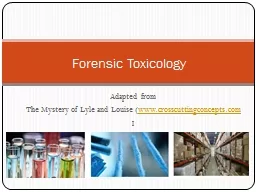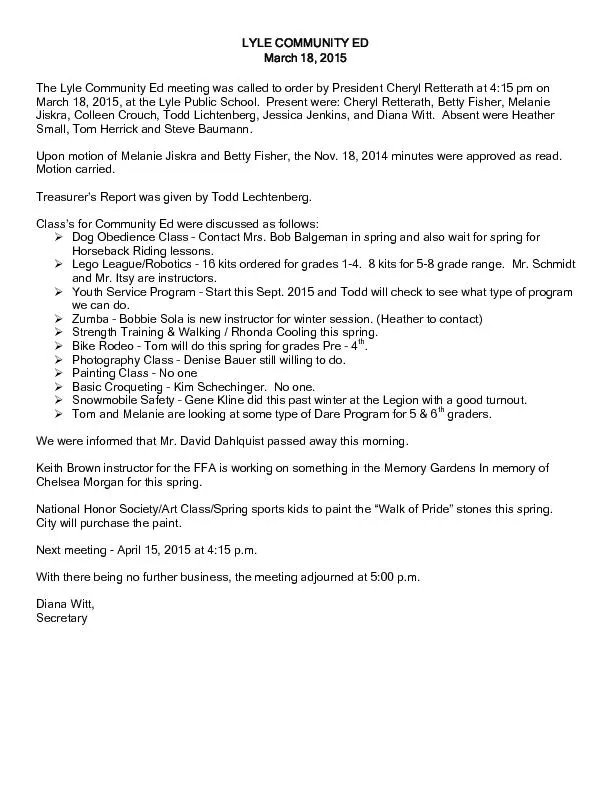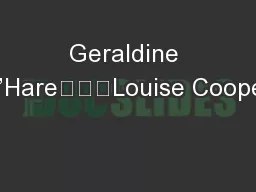PPT-Adapted from The Mystery of Lyle and Louise (
Author : missingsole | Published Date : 2020-06-23
wwwcrosscuttingconceptscom I Forensic Toxicology History of Forensic Drug Testing 1830s James Marsh was summoned to testify in the trial of James Bodie Bodie
Presentation Embed Code
Download Presentation
Download Presentation The PPT/PDF document "Adapted from The Mystery of Lyle and Lo..." is the property of its rightful owner. Permission is granted to download and print the materials on this website for personal, non-commercial use only, and to display it on your personal computer provided you do not modify the materials and that you retain all copyright notices contained in the materials. By downloading content from our website, you accept the terms of this agreement.
Adapted from The Mystery of Lyle and Louise (: Transcript
Download Rules Of Document
"Adapted from The Mystery of Lyle and Louise ("The content belongs to its owner. You may download and print it for personal use, without modification, and keep all copyright notices. By downloading, you agree to these terms.
Related Documents














